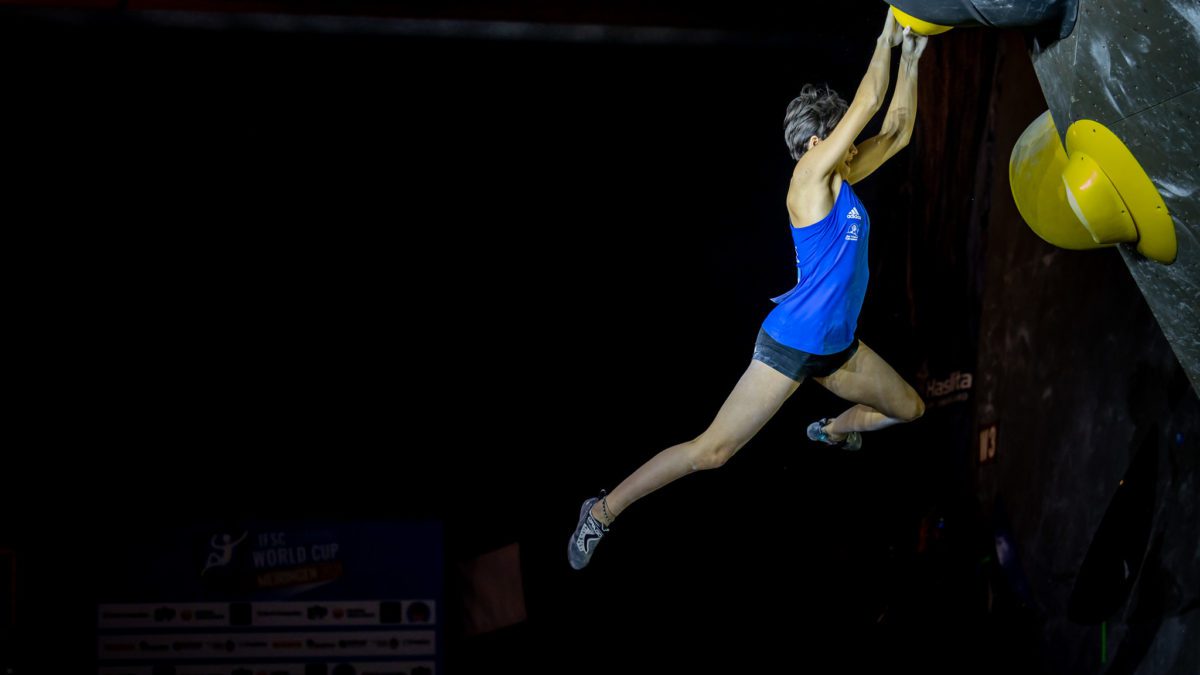How to Identify Your Weaknesses
Identifying weaknesses is a difficult process, but working with your community can be a great place to learn what needs improving

Although progression can come from numerous approaches, we must first see our skills. While some prefer to focus on strengths and others prefer to work on their weaknesses, progression begin in perceiving your climbing as a complete picture.
As we all have biases, this can be hard. Still, with the right preparations, anyone can identify those things that they most need to work on.
First, if you have a coach, ask them what they think. The most exciting aspect of coaching comes from the relationship built between the climber and their trainer. The coach watches the climber and considers their movement from a third person perspective. This allows them to quickly identify the mechanical weaknesses of the climber.
Often, the climber will misinterpret their strengths and weaknesses based on their own biases. With that said, not many climbers have coaches. Although you may not have a person who trains you, it is likely that you climb with someone regularly. As such, ask them what your weaknesses are. Tom Randall described a situation where he and his buddies sat down and talked about their weaknesses in open and honest terms.
They would sit down and pick three aspects that seemed to hold Randall from progression. By consensus, Randall could learn things about his climbing he might not have otherwise noticed.
Video provides another great way to identify weaknesses. Although recording yourself in the gym can feel weird, almost all World Cup climbers watch themselves compete after the competition. Understanding how and why you fell or ran out of strength is useful to progression. Once you have analyzed your climbing, find a friend and ask them their thoughts.
Since climbers ingest large amounts of climbing media, many have an idea of how a strong climber should look when they are on the wall. Even if the person you are chatting with climbs beneath your level, they may have some valuable insights. Compare those against your own and build a plan based around your goal.
What is your goal?
Working on your weaknesses takes on different forms depending on your goal. For example, if you wish climb something scary, approaching your goal may be as simple as learning to climb in control. Conversely, if your goal is to climb a specific project or to compete, then you must identify your weaknesses within the context of that goal.
If you imagine that your goal for the next year is to climb Shelter, for example, then you might take a few things into consideration. Although one of your weaknesses overall might be slopers, that is a less relevant detail than your weakness regarding core. Some weaknesses don’t apply to all projects.
Your inability to climb hard on slab may not prevent you from climbing an overhung test-piece like Shelter. Instead, core strength, shoulder stability, and finger strength will likely be weaknesses on the project, even if each of these represent your strengths on other boulders. As this problem isolates those areas, even a strength can become a weakness at a certain difficulty.
In a competition setting, your weakness may be more complicated. Although outdoor bouldering also has an important mental component, the precision required for competition climbing, and the associated pressure of winning or losing, can provide a host of new challenges. In competition climbing identifying your mental weaknesses with a training partner can be super helpful.
How to move forward
In some ways, that is up to you. Naturally, you will have to work on it at some point, but there are many approaches to each goal. You may find yourself looking for unique solutions to this problem. It all depends on context.
For example, in the Olympic format, it made sense for competitors to prioritize their strengths over their weaknesses. Becoming mediocre at Speed would not be enough to win the competition.
By contrast, focusing on your weaknesses might better prepare you for the diverse problems of a bouldering round. But to that effect, maybe you abandon your lead climbing weaknesses to better focus on the bouldering discipline. In doing so a climber may become a bouldering specialist, but a generalist in the discipline.
Realistically, escaping our weaknesses is improbable. While we can contextualize the limits of our climbing experience, we will still have weaknesses on every climb we try. The reason we work on our weaknesses is because they allow us the most rapid progression. Does that mean we stop working on our strengths? No. Without strengths, climbing becomes challenging. Instead, climbers must remember to work on both and understand the varied importance of each.
Featured image of Oriane Bertone by Jan Virt.


